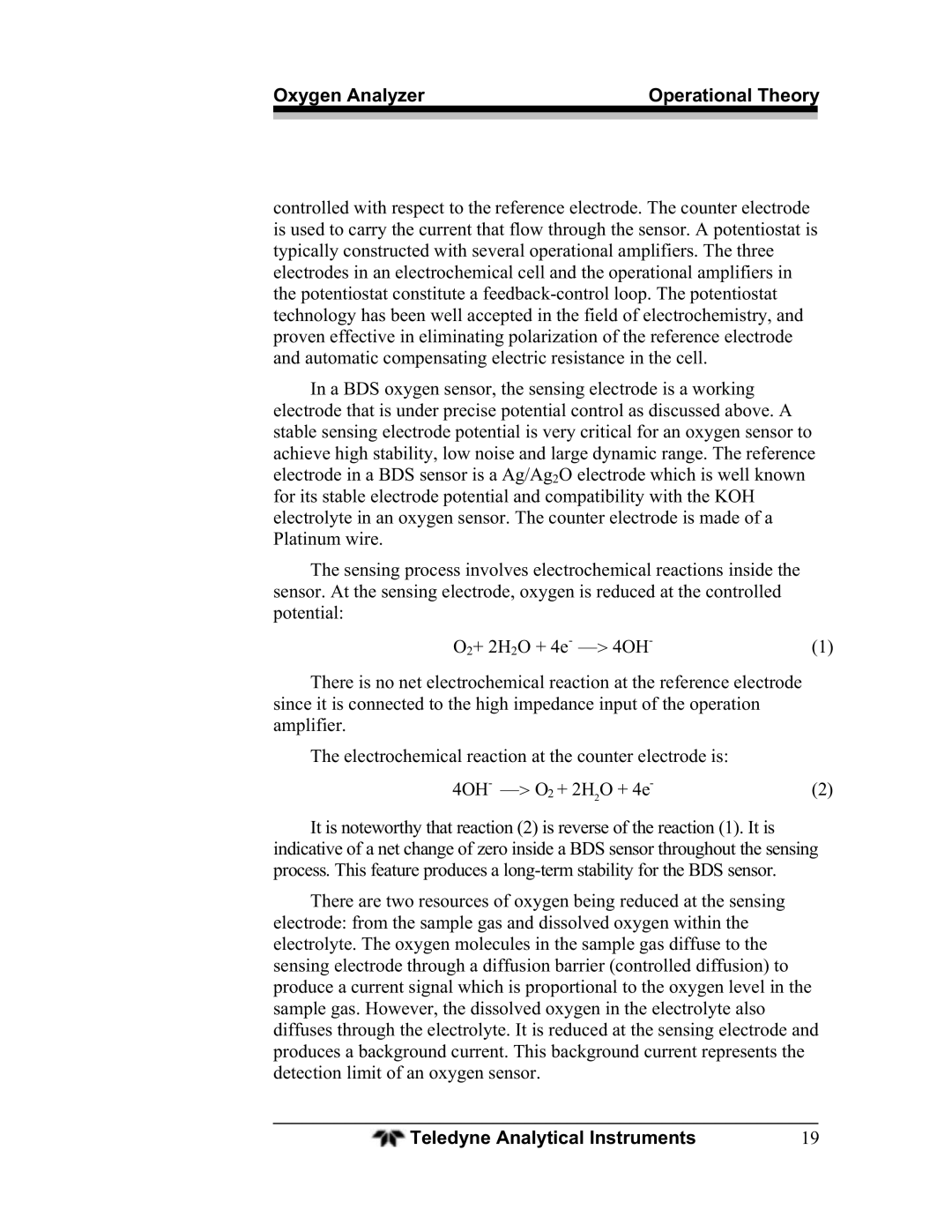Oxygen Analyzer | Operational Theory | |
|
|
|
controlled with respect to the reference electrode. The counter electrode is used to carry the current that flow through the sensor. A potentiostat is typically constructed with several operational amplifiers. The three electrodes in an electrochemical cell and the operational amplifiers in the potentiostat constitute a
In a BDS oxygen sensor, the sensing electrode is a working
electrode that is under precise potential control as discussed above. A stable sensing electrode potential is very critical for an oxygen sensor to achieve high stability, low noise and large dynamic range. The reference electrode in a BDS sensor is a Ag/Ag2O electrode which is well known for its stable electrode potential and compatibility with the KOH electrolyte in an oxygen sensor. The counter electrode is made of a Platinum wire.
The sensing process involves electrochemical reactions inside the sensor. At the sensing electrode, oxygen is reduced at the controlled potential:
O2+ 2H2O + 4e- | (1) |
There is no net electrochemical reaction at the reference electrode since it is connected to the high impedance input of the operation amplifier.
The electrochemical reaction at the counter electrode is:
4OH- | + 2H O + 4e- | (2) |
| 2 |
|
It is noteworthy that reaction (2) is reverse of the reaction (1). It is indicative of a net change of zero inside a BDS sensor throughout the sensing process. This feature produces a
There are two resources of oxygen being reduced at the sensing electrode: from the sample gas and dissolved oxygen within the electrolyte. The oxygen molecules in the sample gas diffuse to the sensing electrode through a diffusion barrier (controlled diffusion) to produce a current signal which is proportional to the oxygen level in the sample gas. However, the dissolved oxygen in the electrolyte also diffuses through the electrolyte. It is reduced at the sensing electrode and produces a background current. This background current represents the detection limit of an oxygen sensor.
Teledyne Analytical Instruments | 19 |
